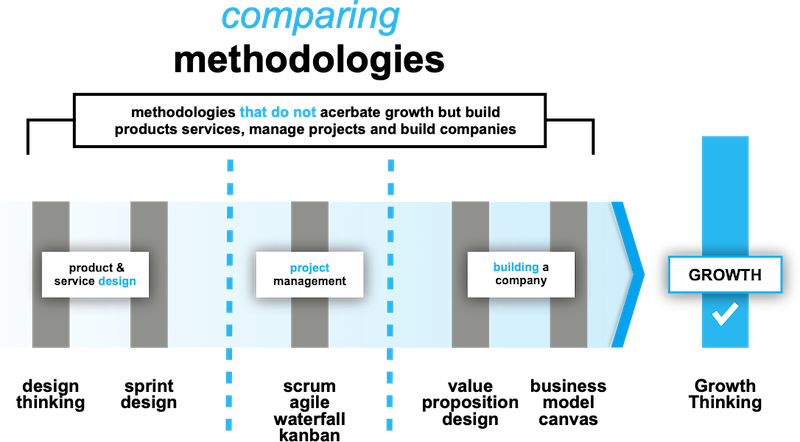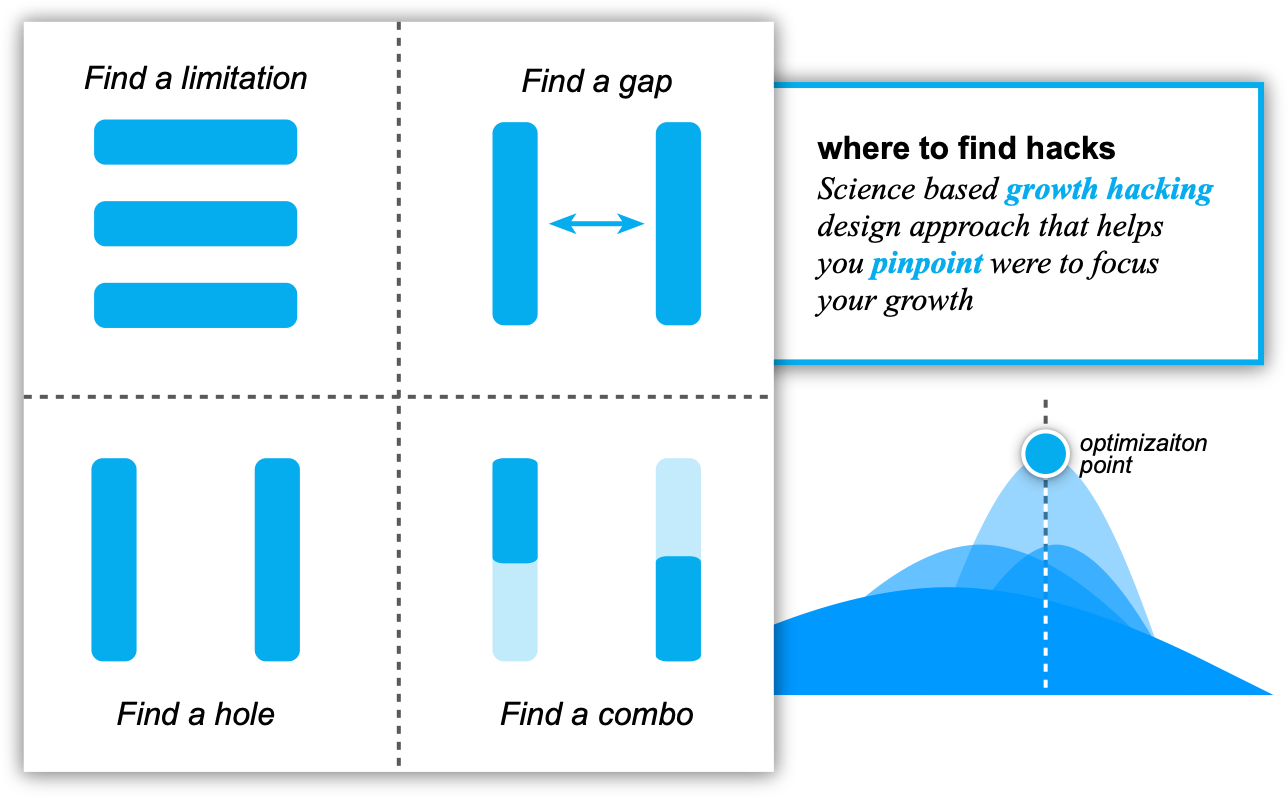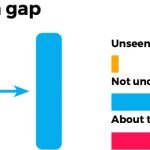The four types of growth hacks and a checklist of ways to exploit them for super growth
Four types of growth hacks help growth hackers unravel growth opportunities by finding unique opportunities others don’t see.
As covered before, we discussed the mindset and habits of growth hackers, and one of the fundamental aspects is how they see opportunities. In most cases, it’s built on exploiting someone else’s weakness. These exploitations are unique growth opportunities that few see and can capitalize on.
Subscribe for updates
Before we get started, here is some helpful background to growth hacking
- What is growth hacking?
- Why is growth hacking important?
- How does growth hacking work?
- When should growth hacking be used?
- How to develop the skills to hack growth?
What is growth hacking, and What do growth hackers do?
Growth hackers explore new growth opportunities systematically at any point of the customer journey, from awareness through the market to brand ambassadors by optimizing the product.
Regarding technology, it originated in 2010 when Sean Ellis coined it is mostly used by growth hacks for startups because of its limited budgets and limited resources.
Since then, it has shown an incredible increase in popularization among large-scale and traditional businesses.
Companies like Shopify and Uber have their own head of growth and dedicated growth teams. The growth hacker is based on experiment-based, and data-driven.

There is a wide range of definitions; in the Book Ready Set Growth, Hack growth hacking is defined strategically as a process that achieves disproportional results.
This is best understood through an example of efforts v.s results. This is when less effort is exerted to get dispositional results.
How does growth hacking work?
As defined in the Ready Set Growth Hack, growth hacking is a systematic process governed by a concept called the growth cycle. The growth cycle is a three-phase process, starting with a growth problem, moving into experimentation, and scaling.
Based on this process, once a growth problem is well defined through a specific process, it would then be up to the growth hacker to find solutions. Solutions are found vis structured and systematic experimentations.

Using growth analytics for data-driven growth decisions, growth hackers can quickly discover what works and doesn’t before investing a penny in more development. This is governed by a process called growth thinking, a design methodology used for growth hacking.
Break the rules – growth hacking.
The hidden weapons of growth hacking are simple and simple: Be a rule-breaker. The job requires you to think outside the box and unleash your creativity.
A growth hack involves having the right growth-hacking mindset.
This job requires creativity and ad-hoc experiment with hypotheses and high potential. Be creative growth Hacks won’t come with any rules.
Rule-breaking is at the core of growth thinking and how the growth hacking process works.
- if a rule is working, find a better way to break I
- If a rule isn’t working, break it with a better one
- If a rule is about to fail, let it and then break it
- If a rule is about to have success, break that too
The growth hacking or growth mindset is a very different way of working than other professions. Their goal is the north star metric which is a growth goal and only a growth goal.
Four types of growth hacks
These four areas can be seen as a guide to answering the question “How to find a growth hacker” This guiding question sets the tone and process for finding, executing, and creating new growth hacks.
Who are the best growth hackers? – The best of them use one of these four strategies as an exploit. use this as a tool to mapping our your growth strategies.
The optimization point is the target in deciding which of the four types of growth hacks best suits a situation. Through our research, we have found the optimization point is best measured by
- Speed of execution – how fast and effective you can action your growth hack.
- Level of flexibility to adjust – how fast and accurately you can change
- Cost of execution – how to keep execution cost-effective
- Return on investment – how to lower cost, efforts, and time against the results
In optimizing growth hacking, we look at the four types of growth hacks. There are four types of growth hacks they seek to exploit:
In optimizing growth hacking, we look at the four types of growth hacks. There are four types of growth hacks they seek to exploit:
- Find a limitation – an area not being solved well enough.
- Find a gap – an area not being solved at all.
- Find a hole – an area where its completely dysfunctional
- Find a combo – an area where a combination has not been exploited.
The most exploited type of growth hack is gaps, while combinations are the least executed. Although gaps might rise to the tide on this, they are the easiest to identify and execute. In contrast, the combinations are the least exploited due to complexity, lack of vision, and a willingness to try new things.
Business methodologies
Growth acceleration is one of the four types of methodologies used in the practice of management. The growth accelerator space is the most underdeveloped of the four types that being:

- Offering design models to design products and services
- Managing projects models designed to manage development
- Building a company models design for building a company
- Accelerating Growth models designed to accelerate the growth process
To learn more about business methodologies and how they work click here to learn more.
Let’s get started with the four types of growth hacking strategies.
Find a limitation – an area not being solved well enough.
Limitations are when parts of a system cannot reach their full potential; it can be something missing, or not done well, or something that doesn’t function right. It also can be something that has been overlooked and creates a limitation.
- Neglect
When a limitation is known, no one wants to take on the effort or pain to solve this, and hence they find other more comfortable places to put their efforts. This presents a significant limitation since they outright ignore it and are most likely unwilling to tackle it.
Validation checklist
- Ignoring the growth opportunities
- Miscualations of the growth opportunities
- Can’t see the value in the growth opportunities themselves
- Not investing in the overall growth opportunities.
- Not interested in the growth opportunities
- Blind-spot
When a limitation exists, no one really sees it, understands it, or even acknowledges it. This is a super ample space to be, as it gives you a natural advantage of being ahead of the curve. These opportunities are usually straightforward, but no one sees them.
Validation checklist
- Don’t see the growth opportunities.
- Don’t understand the growth opportunities.
- Don’t see the value in the growth opportunities.
- Don’t know how to make the growth opportunities.
- Don’t give it importance to the growth opportunities.
- Underestimated
When a limitation is known, understood, and even being actively tackled. However, they don’t see the real opportunity as they have become exhausted or numb to see the same problem repeatedly. This also gives a natural advantage of taking a new perspective others have not.
Validation checklist
- Undervalue the growth opportunities
- Miscalculating the growth opportunities
- Don’t see value in the growth opportunities.
- Don’t see the growth opportunities altogether.
- Mindset is blocked from seeing the growth opportunities.
CASE: Blockbuster was neglecting the streaming market very early on although they saw it coming and even had better service than Netflix to start with. However, they were to invest in their physical space and retail footprint. This mindset blinded them from seeing the future of their industry. As a result, this became a major limitation that Netflix exploited very well.
Find a gap – an area not being solved at all.
A gap is an element where something is missing or not done well at all. This is not a limitation but rather the absence of something vital or not seen at all. Gaps present a massive opportunity and account for about 25% of all growth hacks undertaken.
- Unseen
When no one sees a gap, this is usually due to a lack of insights or the ability to see fresh perspectives. These are some of the best growth hacking opportunities where you can get ahead of the curve before everyone else.
Validation checklist
- Undetectable to the majority
- Not enough exposure
- Not enough insights
- Not enough experiments
- No one cares or see the value.
- Not understood
When a gap isn’t well known, its existence is known, but not enough insights on how to resolve this gap. This means no one has understood the opportunity itself and why no one will invest their time and efforts. This is where you stand to shine.
Validation checklist
- Poor insights and low-quality data
- Little research conducted to understand
- Lack of foresight to see what is coming in the future.
- Not willing to take risks and experiment
- Outcomes are not seen as valuable enough to justify taking action.
- About to be solved
When a gap is known and actively being resolved, this doesn’t mean there is no opportunity but rather a chance to resolve the gap better than others. This would be a more competitive space but worthwhile to tackle.
Growth hacking validation checklist
- Highly competitive space
- Utilize the efforts of others to get an even better solution.
- Others are not seeking collaboration opportunities.
- Validated demand and value, justifying pursuing growth in this area
- Large potential for volume and growth
CASE: AirBNB saw an unseen market in the area of tourism, where people can use their own houses as hotels. As simple as this might sound, they saw what no one else was getting out of asset management and focusing on service experiment management. While hotel chains continued to invest heavily into assets and branding, AirBNB was able to help people build income using their own properties, meanwhile giving customers a cost-effective experience.
Find a hole – an area where its completely dysfunctional
A hole is a situation, an element, or a system in part or in whole where it is outright dysfunctional. The parts don’t come together well or not effectively and hence create a situation of poor performance.
- A big mess
When a hole is so deep, no one wants to tackle it. This is when the dirty work is seen as not worth it. This means people are underestimating growth opportunities and don’t know the value of the outcome.
Hacking validation checklist for growth
- High level of complexity
- People avoid investing effort and time
- Lots of confusion and misinformation
- Undervaluing potential outcomes
- Reorganization, rethinking, and a fresh take is needed.
- No one wants the pain.
When a hole is seen as too painful to tackle, no one is willing to invest the effort to find growth opportunities. This is a blind spot because it is highly underestimated, and the outcomes are not understood by most.
Checklist for growth hacking validation
- Efforts and time are perceived as too much to justify investing.
- Outcomes are undervalued
- Few people are actively pursuing it.
- Perceived as low value, low outcome, and not worth it
- The pain is seen as too much, and no one wants to take it on.
- Fresh perspective
When a hole is an old problem and seems everyone has tried to find growth, but no one has. This simply means an entirely new approach is needed where everyone is blinded to the possibilities related to that hole.
Validation checklist for growth hacking
- New insights others don’t’ know.
- Seeing new ways of solving a problem that has not been attempted
- Has been tried and tested but not working well
- See a different, more valuable outcome than others.
- The investment of time and effort is justified, but others don’t think so
CASE: Ghost, cloud, or dark kitchen as they are referred to aren’t something new, but when the logistical nightmare of the delivery side of the food business turned into an even bigger mess due to the covid-19 pandemic disruption started. The Food and Beverage industry is being disrupted by delivery companies like Deliveroo, not restaurants. Deliveroo took advantage of the BIG MESS happening in managing logistics, order fulfillment, and marketing on the front-end of food businesses.
Find a combo – an area where a combination has not been exploited.
This is when two or more existing elements are combined via an integration that allows them to work together. This usually will create a massive amount of cost savings, time effectiveness, and a significant reduction in the efforts required.
- Never been done
When a combination has not been attempted, remember, this is about connecting two or more things that exist that work optimally together. Ideally, in this case, something no one has connected the dots with before.
validation checklist for growth hacking
- Never seen or done before
- Attempted but not enough efforts put into it.
- Attempted but not done right before
- A blind spot where others simply do not see or understand it
- Low levels of optimization, not combined well, or more improvements needed.
- Not done well
When a combination has been attempted but not well enough. This is usually because they have not integrated two or more elements well or explored other ways or connections to enhance this specific growth opportunity,
Validation checklist for growth hacking
- Ineffective combinations for better results
- Inefficient combinations for better results
- Expired combinations that did work but do not now
- Have not explored adding another combination
- Seek creative combinations not attempted before
- Optimization
When a combination exists and is working because it is not effective or efficient anymore. This would be exploring a better way to make it work or a new combination that is more effective and efficient.
Validation checklist for growth hacking
- Finding better integrations for better results
- Finding better tools for better results
- Finding an additional combination for better results
- Finding a better supplement for one of the combinations
- Reconfiguring existing combinations for a better result
CASE: Zapier built a whole business around this. They become the combo exploiters of the SaaS world. If the connection did not exist, they made it happen. They took the most popular and highly used services out there and created an easy and effective way to create connections to supercharge and automate your workflow. Although this is a software-based example. Combinations happen across many levels, not just software.
Where to find growth hacks
Using the four types of growth hacks gives you a cheat sheet on where to look. This applies to all systems, platforms, or general situations in which you need to hack growth. Keep in mind; a growth hack is about disproportionate results. This is about exerting the least amount of effort and resources to get the most results possible. In general, we have two scenarios to deal with:
- Problem > solution — You define a growth problem, then seek to find a growth hack.
- Solution > problem — You have a growth hack and then see a problem to apply it to.
In the first scenario, this provides a broad scope of potential as the solution is always pointing towards an application making this approach practical. In the second scenario, a very well-developed solution is in place, but it needs to seek problems where it can be applied. The challenge with the second scenario is it often doesn’t exactly fit. So people try to make it work, and that is where more trouble comes into play. The best of the two scenarios is the start by understanding the growth problem in detail.
Subscribe for updates
Growth hacking optimized
In conclusion, knowing which type of growth hack to use in which scenario gives growth hackers a significant advantage by measuring their efforts. We have been using growth Labz and Artificial intelligence-driven tools to determine the best growth hacks to use.
99% of growth hacks do not work. It is primarily due to a lack of testing, ability to change quickly and to keep it cost-effective. Experimentation is at the heart of making growth hacking a success, and mastering that capability is the number one challenge growth hackers face to ensure long-term success.
————————————
Gain access to a $249 report, FREE. This report is about the return on investment and growth hacking experiments helping you pinpoint critical decisions to supercharge your growth using 107K data points from some of the world’s fastest-growing companies.
https://www.subscribepage.com/growth_hacking_experiments_yield_best_returns
————————————
FAQs for this article
What are the four types of growth hacks?

1. Find a limitation – an area not being solved well enough.
2. Find a gap – an area not being solved at all.
3. Find a hole – an area where its completely dysfunctional
4. Find a combo – an area where a combination has not been exploited.
Which type of growth hack is most used?

The most used type of growth hack is — Finding a gap, this is because they are the easiest to find, exploit and capitalize on.
Which type of growth hack is the least used?

The least used type of growth hack is — Finding a combination. This is highly overlooked due to the efforts required but the outcomes are very prosperous.
MORE QUESTIONS
What is an example of a growth hacker tactic?
Growth hacking tactics are steps used to increase growth most likely are processes that utilize technology with the advantages of lowering cost, speeding up processes, and creating competitive customer experiences.
Who are the best growth hackers?
The growth hacking space is still a very small community with 5,000 growth hackers globally who are actively practicing the trade. Some of the best know growth hackers are Nader Sabry, Neil Patel, Ian Wart, James Halton, etc.
What do growth hackers do?
Growth hackers use the growth hacking process to achieve disproportional results. This involved a three-phase process where it starts with the growth problem, experiments then growth extensions for mass-scaling.
How do you hack a city for growth?
Dubai is one of the next examples in the world. They have been growth hacking economic policies to create a favorable investment and trade environment where companies and investors can easily plug and play into their economic system.





